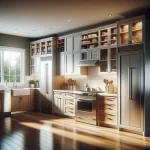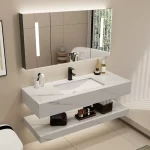What is a Kitchen Sink Base Cabinet?
A kitchen sink base cabinet is specifically designed to hold your kitchen sink. It provides not only a sturdy base for the sink but also essential storage and plumbing access. These cabinets are central to both functionality and the aesthetic of your kitchen layout. Selecting the right one ensures seamless integration with your kitchen design, while also addressing practical needs.
Purpose and Functionality
Kitchen sink base cabinets are crafted to serve a dual purpose. First, they securely support the weight of the sink and any installed fixtures. Second, they accommodate the plumbing requirements, such as pipes and fittings, by leaving ample interior space. Unlike standard cabinets, they typically lack shelves or drawers at the top so plumbing can remain unimpeded. Additionally, these cabinets enhance storage by offering space to keep cleaning supplies or waste bins. Their design ensures that functionality meets convenience.
Standard Dimensions and Sizes
Kitchen sink base cabinets come in standard dimensions to fit most kitchens. The typical width ranges from 30 to 36 inches, while height and depth follow standard cabinetry sizes – about 34.5 inches high and 24 inches deep. However, custom sizes are also available for unique kitchen layouts. The interior dimensions are large enough to accommodate various sink configurations, ensuring flexibility in choosing single-basin or double-basin sinks. Accurate sizing ensures a proper fit, both for the sink and surrounding cabinetry, avoiding alignment issues during installation.
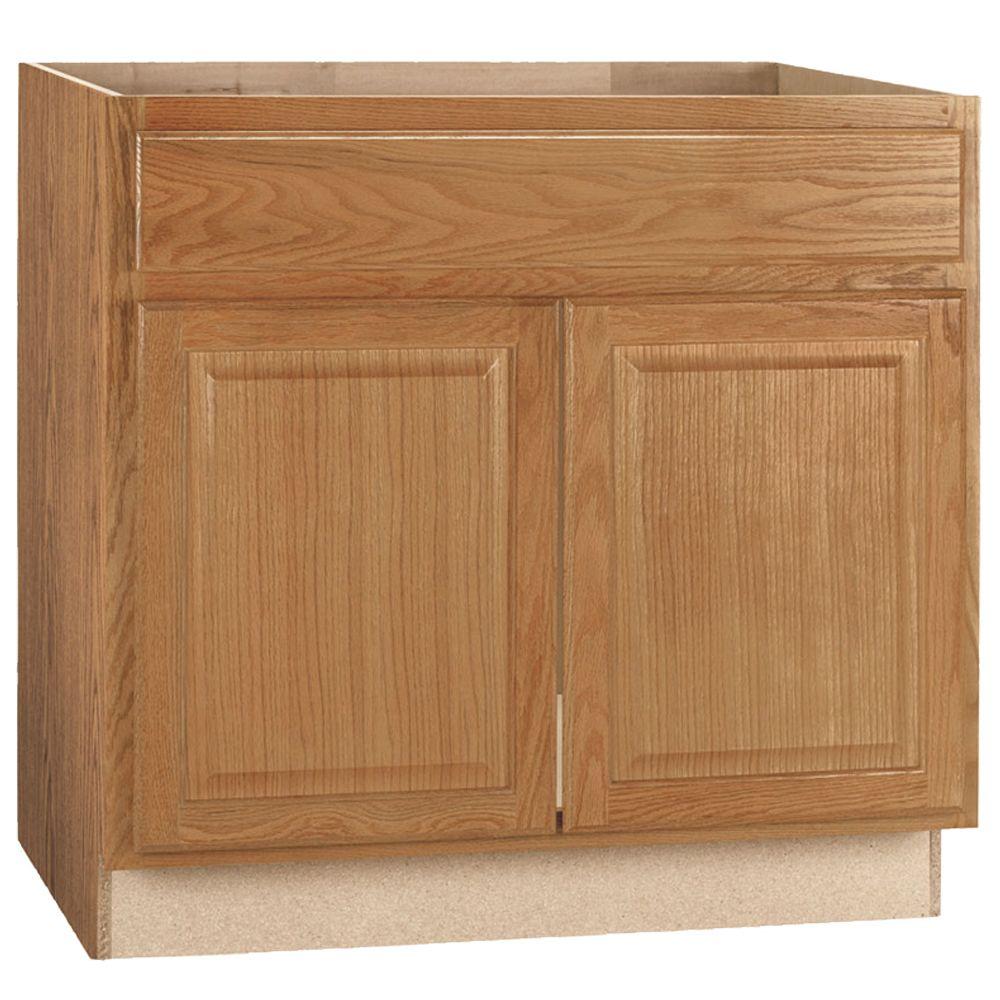 Materials for Sink Base Cabinet
Materials for Sink Base Cabinet
Choosing the right material for your kitchen sink base cabinet is critical. It impacts durability, style, and maintenance needs. Different materials bring unique benefits and drawbacks, so understanding your options helps you make the best choice.
Wood Options: Pros and Cons
Wood is a classic material for kitchen sink base cabinets. It adds warmth and a timeless aesthetic.
Pros of Choosing Wood for Your Cabinet:
- Durability: High-quality hardwoods like oak or maple are strong and long-lasting.
- Customizability: Wood is easier to shape and finish to match existing décor.
- Versatility: It complements a variety of kitchen styles, from rustic to modern.
Cons of Choosing Wood:
- Moisture Sensitivity: Wood can warp or swell when exposed to humidity.
- Higher Maintenance: It requires sealing and careful cleaning to prevent damage.
- Cost: Premium hardwoods may be more expensive than other materials.
Alternative Materials (MDF, Plywood, etc.)
Alternative materials provide a cost-effective and practical option for sink base cabinets. They mimic wood at a lower price.
1. Medium-Density Fiberboard (MDF):
- Pros: Affordable, smooth surface for paint, and resists cracking.
- Cons: Less durable than wood and vulnerable to water damage.
2. Plywood:
- Pros: Stronger and more moisture-resistant than MDF, with a more stable core.
- Cons: Can be expensive depending on the grade and finish.
3. Laminate Cabinets:
- Pros: Easy to clean, scratch-resistant, and water-resistant.
- Cons: May lack the visual appeal of real wood.
Choosing a material depends on your budget, style preferences, and how much wear the cabinet will endure. Weigh the pros and cons carefully to find the right fit for your kitchen.
Key Features to Look for in a Sink Base Cabinet
Storage and Organization Considerations
Storage and organization are essential features of a kitchen sink base cabinet. These cabinets should have enough interior space to hold cleaning supplies, trash bins, or plumbing equipment. Practical designs include pull-out trays or bins that keep items accessible. Doors should open smoothly, offering easy access to everything stored within. Additional features, such as compartments or organizers, can simplify storage and maximize efficiency. Carefully consider your storage needs before choosing a cabinet with the right options.
Durability and Moisture Resistance
Durability is vital for a kitchen sink base cabinet, as it faces regular wear and tear. Materials should withstand heavy use and moisture exposure. Water-resistant options, like laminate or plywood, are excellent for handling spills and humidity. Wood, while durable, needs proper sealing to combat potential warping. Check for a sturdy frame and secure joints to ensure longevity. Selecting moisture-resistant finishes or coatings helps maintain the cabinet’s appearance and functionality over time.
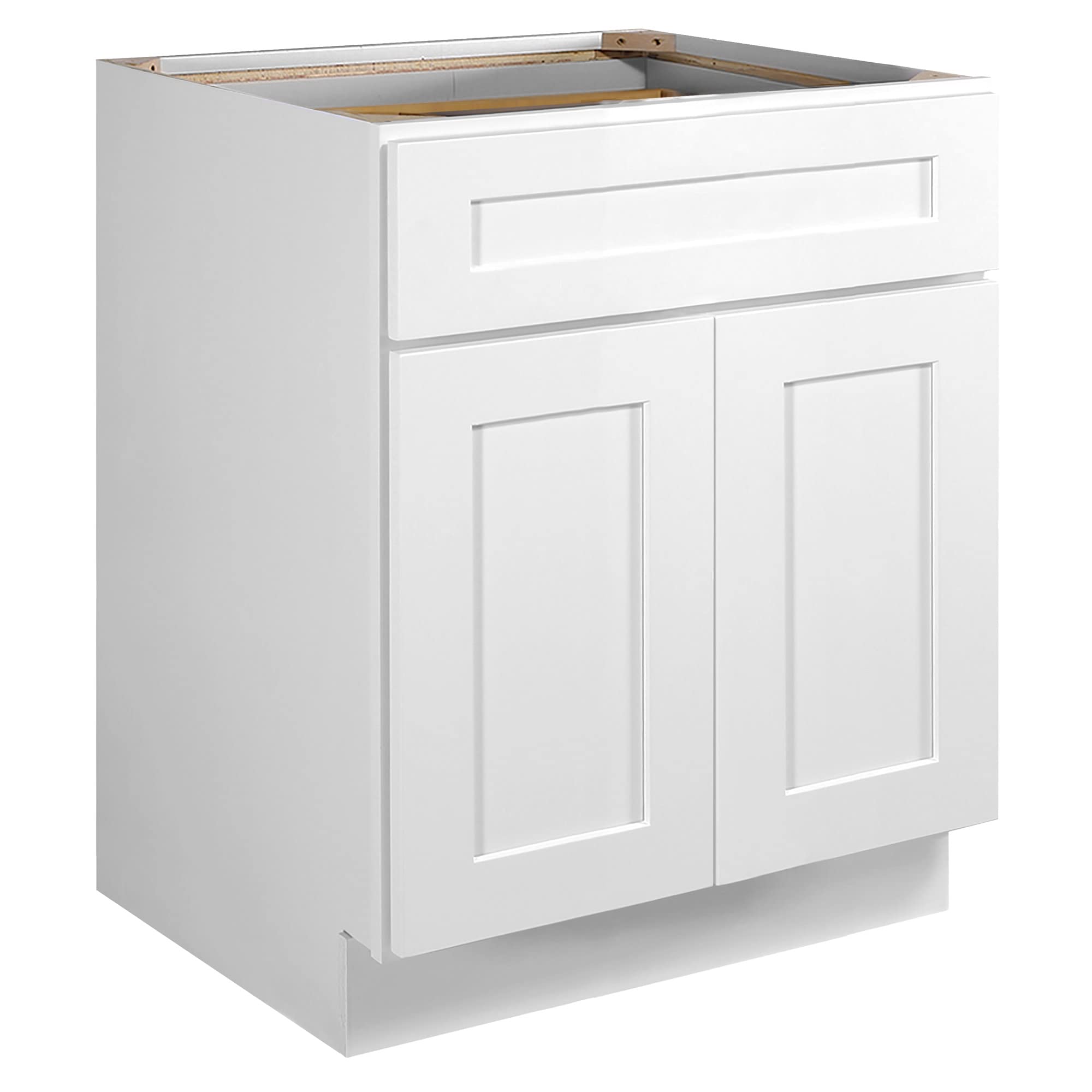 How to Measure for a Sink Base Cabinet
How to Measure for a Sink Base Cabinet
Measuring for a kitchen sink base cabinet is crucial for a perfect fit. Precise measurements ensure your sink and cabinet align properly, avoiding problems during installation.
Step-by-Step Measuring Guide
Follow these steps to measure accurately:
- Measure the Cabinet Opening:
- Use a tape measure to check the cabinet’s width, height, and depth.
- Standard base cabinets are typically 34.5 inches high and 24 inches deep.
- Measure the Sink Area:
- If replacing an existing sink, measure its width, depth, and front-to-back dimensions.
- For new installations, base your sink size on the available cabinet space.
- Account for Plumbing:
- Ensure the interior space accommodates plumbing fixtures like pipes and fittings.
- Check for obstructions that may interfere with installation.
- Double-Check Your Measurements:
- Verify all dimensions to avoid measurement errors.
- Write down each measurement to ensure accuracy.
Avoiding Common Mistakes
Avoid these common errors during the measurement process:
- Ignoring the Countertop Overhang:
- Factor in countertop overhangs to prevent alignment issues.
- Neglecting Plumbing Space Needs:
- Don’t forget to leave enough room for plumbing to fit comfortably.
- Overlooking Wall Irregularities:
- Measure wall angles or any uneven sections behind the cabinet location.
- Estimating Instead of Measuring:
- Always use a reliable tape measure. Never rely on rough estimates.
Following these guidelines will help you select the right kitchen sink base cabinet for a smooth and hassle-free installation.
Styles and Design Options
Choosing the right style for your kitchen sink base cabinet is important. It affects your kitchen’s functionality and design. Various options are available to match your space and taste.
Popular Cabinet Door Styles
The cabinet door style sets the tone for your kitchen design. Here are popular options:
- Shaker Style:
- Features a simple, clean design with a recessed center panel.
- Works well in traditional, modern, or farmhouse kitchens.
- Flat Panel (Slab):
- Offers a smooth, minimalist look with no visible frames.
- Ideal for modern or contemporary kitchens.
- Raised Panel:
- Includes a center panel that is raised for added detail.
- Complements classic and ornate kitchen designs.
- Glass-Front Cabinets:
- Incorporates glass inserts in the doors for a sleek appearance.
- Allows display of attractive dishware or decorative items.
- Beadboard Style:
- Features vertical grooves for a cottage or rustic charm.
- Suitable for cozy or vintage-inspired kitchens.
Each of these styles suits different aesthetics. Pick a style that complements your overall kitchen design.
Matching Sink Types to Cabinets
The sink type you choose impacts your cabinet selection. Ensure compatibility for a seamless look.
- Undermount Sinks:
- Attach beneath the countertop for a clean, modern appearance.
- Require strong support, so a durable base cabinet is essential.
- Drop-In Sinks:
- Have rims that sit on the countertop, making installation easier.
- Work with most standard sink base cabinets.
- Farmhouse (Apron-Front) Sinks:
- Feature a deep basin with an exposed front panel.
- Need custom base cabinets to accommodate their unique design.
- Double-Basin Sinks:
- Include two compartments for multitasking convenience.
- Require wide cabinets to provide adequate support.
- Single-Basin Sinks:
- Offer an uninterrupted, spacious area for cleaning large items.
- Fit both small and large cabinets depending on size.
Matching your sink type with the right cabinet ensures smooth functionality and enhances the design. Carefully consider your needs, space, and style preferences when choosing.
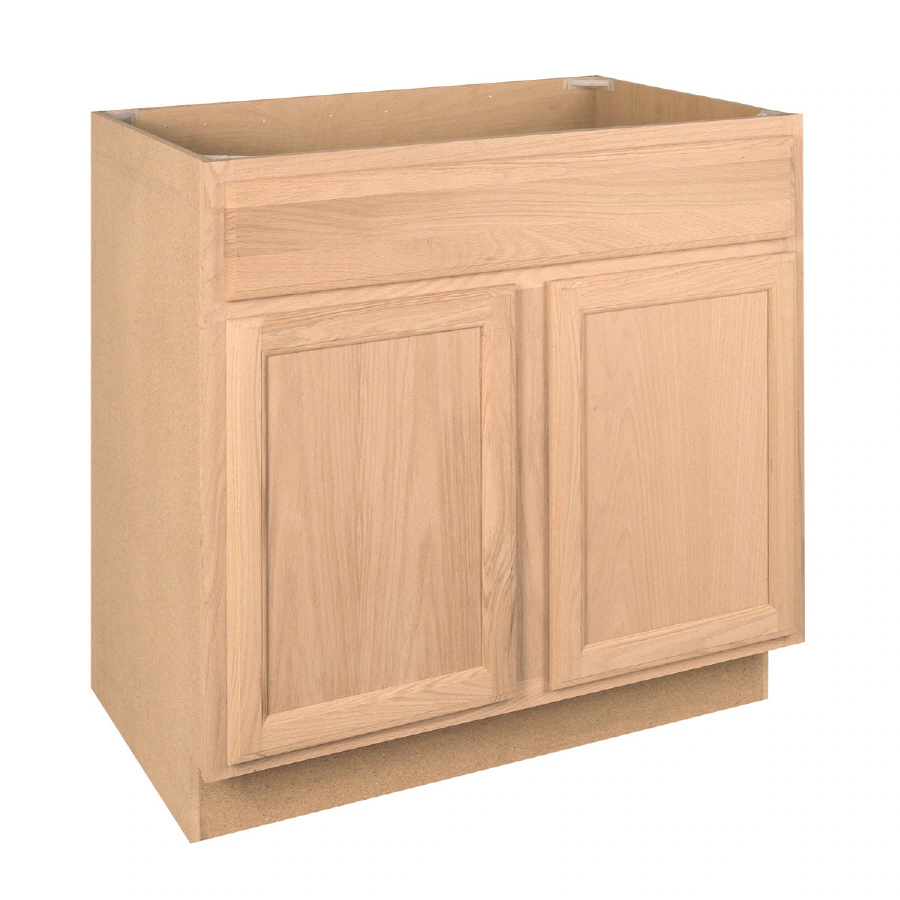 Installation Tips and Best Practices
Installation Tips and Best Practices
Proper installation of a kitchen sink base cabinet ensures functionality and prevents future issues. Follow these tips for a smooth process.
Preparing Your Space
Preparation is key for a successful cabinet installation. Follow these steps to ready your space:
- Empty the Space:
- Remove old cabinets, sink, and any obstructions.
- Clean the area thoroughly to ensure a smooth surface.
- Inspect for Structural Issues:
- Check walls and floors for damage or moisture problems.
- Fix any irregularities like uneven surfaces or gaps.
- Secure Plumbing and Wiring:
- Ensure plumbing and electrical lines are easily accessible.
- Shut off water and power supplies during installation.
- Measure Placement Carefully:
- Mark the cabinet position on the wall for accurate placement.
- Double-check all measurements for proper alignment.
- Gather Tools and Materials:
- Prepare tools like a level, screwdriver, and drill.
- Collect installation materials such as screws, caulk, and shims.
Common Installation Challenges and Solutions
Unexpected challenges can occur during installation. Here’s how to address them:
- Uneven Floors or Walls:
- Use shims to level the cabinet on uneven surfaces.
- Adjust wall brackets if walls are not straight.
- Plumbing Interference:
- Ensure the cabinet allows enough space for pipes.
- Modify the back panel if necessary to fit plumbing.
- Securing the Cabinet:
- Attach the cabinet firmly to the wall studs with screws.
- Use a level to ensure it is perfectly straight.
- Alignment with Countertops:
- Check that the cabinet top aligns evenly with the countertop.
- Adjust the cabinet height or add spacers if needed.
- Dealing with Tight Spaces:
- Assemble the cabinet partially inside smaller kitchen spaces.
- Use compact tools to work in tight areas.
By properly preparing your space and being ready for challenges, installing a kitchen sink base cabinet becomes easier. A well-installed cabinet ensures long-lasting functionality.
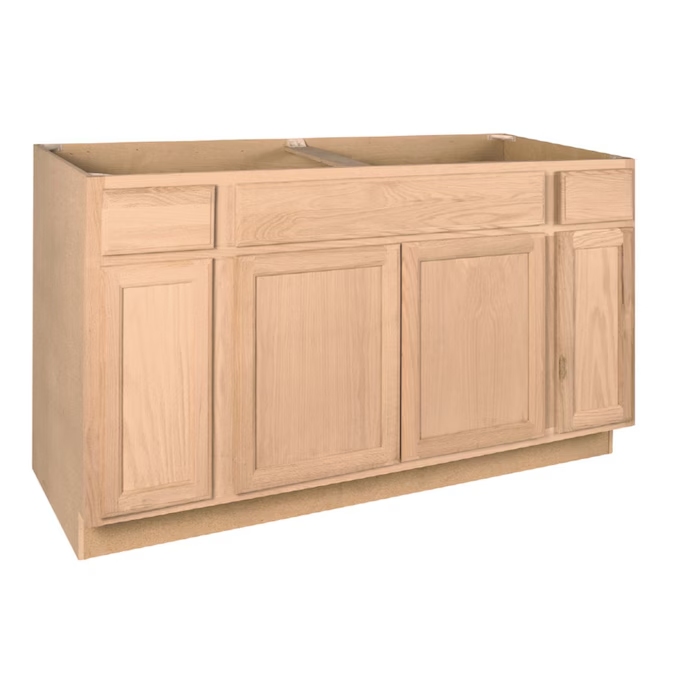 Budget Considerations for Sink Base Cabinets
Budget Considerations for Sink Base Cabinets
Budgeting for a kitchen sink base cabinet involves understanding cost variations and long-term value. Whether you’re looking for affordability or premium quality, it’s essential to weigh price against durability and maintenance needs.
Affordable Options vs. Premium Choices
Affordable cabinets cater to those sticking to a budget while still offering practical features:
- MDF (Medium-Density Fiberboard):
- Pros: Budget-friendly, smooth surface, and paintable.
- Cons: Less durable and prone to water damage.
- Laminate Cabinets:
- Pros: Water-resistant, easy to clean, with lower upfront costs.
- Cons: Can lack the visual warmth of wood.
- Plywood Lower Grades:
- Pros: Provides better moisture resistance than MDF at a moderate price.
- Cons: Less visually appealing than premium wood options.
Premium cabinets, while costlier, offer unmatched quality and durability:
- High-Quality Hardwoods (Oak, Maple):
- Pros: Long-lasting, visually appealing, and customizable.
- Cons: Requires maintenance and comes with a higher price.
- Custom or Designer Cabinets:
- Pros: Tailored to your kitchen’s style and layout.
- Cons: Significantly more expensive.
Selecting between affordable and premium depends on your budget, kitchen style, and longevity expectations.
Long-Term Value and Maintenance Costs
Investing in quality materials impacts how much value you get over time:
- Durability Matters:
- Premium products last longer and withstand heavy use better.
- Cheaper options may need frequent replacement.
- Maintenance Costs:
- Wood requires periodic sealing and careful cleaning.
- Laminate and MDF need less upkeep but can degrade faster.
- Resale Value:
- Premium cabinets enhance your kitchen’s appeal, boosting home resale value.
- Cost-effective choices offer savings but may not increase property value.
Considering upfront costs, future repairs, and resale value helps balance your budget effectively. Choose cabinets that provide the best blend of affordability and long-term benefits.
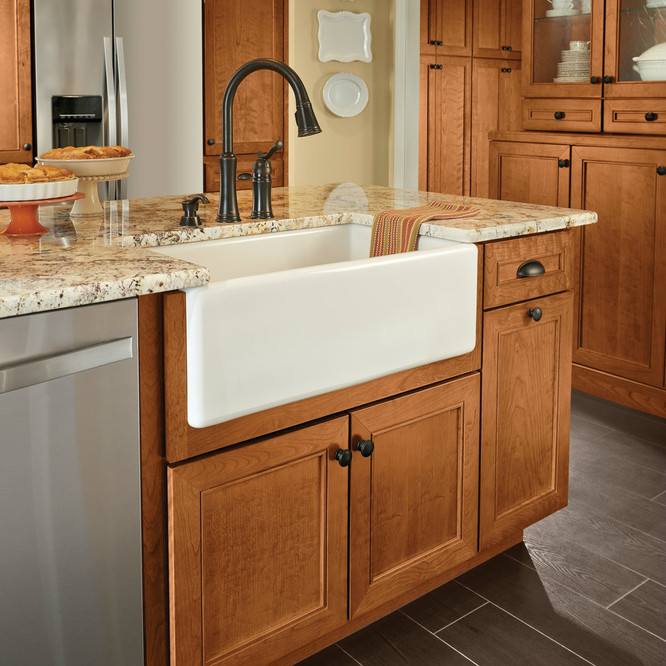 FAQs About Sink Base Cabinets
FAQs About Sink Base Cabinets
Common Questions and Expert Answers
1. What is a kitchen sink base cabinet?
A kitchen sink base cabinet is designed specifically to hold and support your kitchen sink. It offers storage space and allows access to plumbing fixtures.
2. What makes a sink base cabinet different from regular cabinets?
Unlike regular cabinets, sink base cabinets typically lack upper shelves or drawers to accommodate plumbing.
3. How do I choose the right material for my cabinet?
Consider durability, moisture resistance, and budget. Wood offers a classic look, while MDF and plywood are cost-efficient.
4. What are common cabinet dimensions?
Standard sink base cabinets are 34.5 inches tall, 24 inches deep, and 30-36 inches wide.
5. How do I measure for a new cabinet?
Measure the cabinet opening, sink area, and plumbing space. Ensure accuracy for proper alignment.
6. Can I customize my cabinet size?
Yes, custom cabinets are available to fit unique kitchen layouts or oversized sinks.
7. How do I ensure durability for my cabinet?
Choose water-resistant materials like plywood or laminated finishes. Seal wood to prevent moisture damage.
8. What storage features should I consider?
Look for pull-out trays, bins, or compartments for cleaning supplies and trash storage.
9. What sink types work best with all cabinets?
Drop-in sinks fit most standard cabinets, while undermount and farmhouse sinks require specific designs.
10. How can I install a cabinet correctly?
Prepare the space, level the cabinet, and secure it to wall studs. Check measurements carefully.
11. Are budget-friendly cabinets a good option?
Yes, if maintenance and durability meet your needs. Laminate and MDF are popular affordable choices.
They last longer, look better, and can increase home resale value if well-maintained.
These FAQs address common concerns, ensuring you make informed decisions for your kitchen sink base cabinet.
